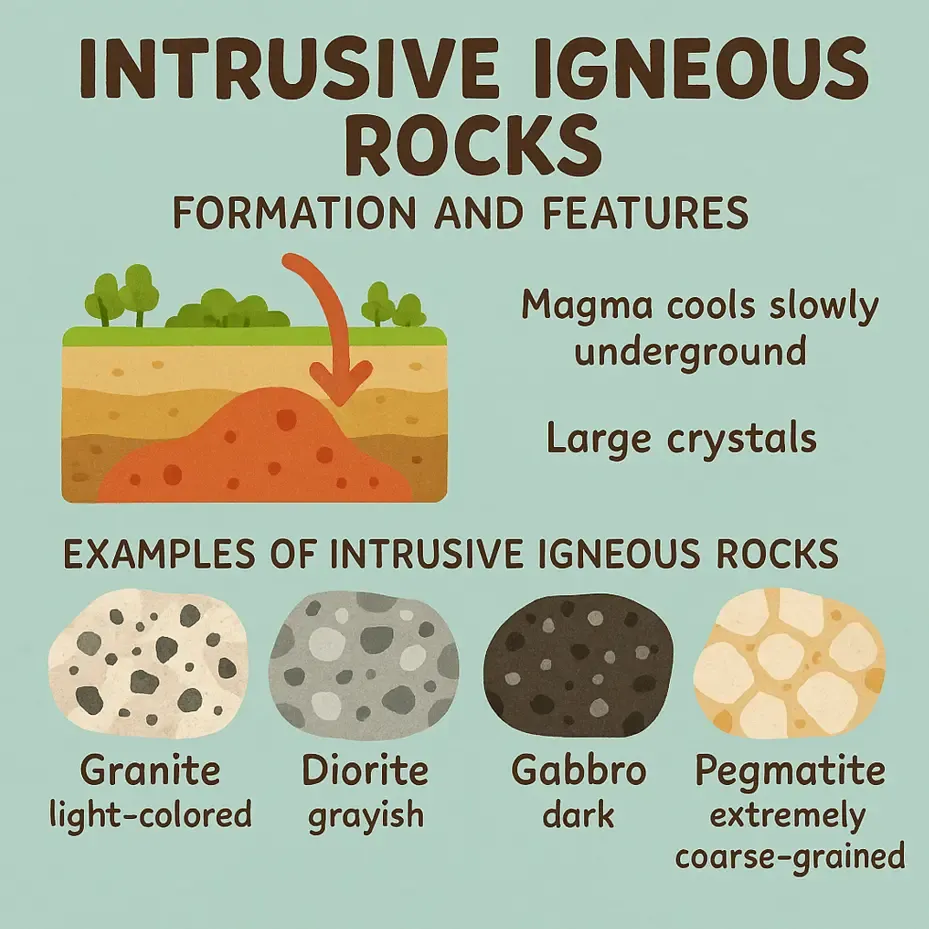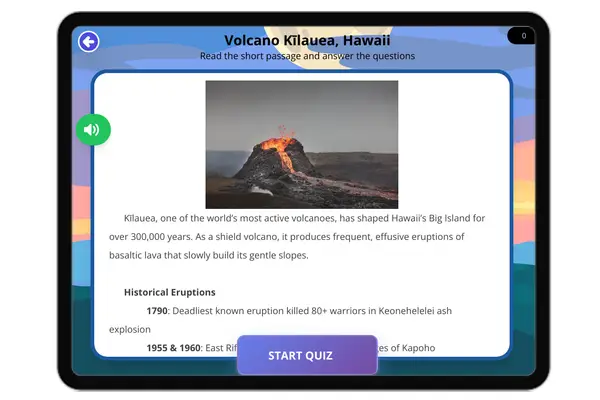Intrusive Igneous Rocks: Formation and Features — Reading Comprehension
Grades
- 5
- 6
- 7
- 8
Standards
- MS-ESS2-3
- RI.6.1
- RI.7.4
- RI.8.2
PRINT+DIGITAL RESOURCE
This learning resource is available in interactive and printable formats. The interactive worksheet can be played online and assigned to students. The Printable PDF version can be downloaded and printed for completion by hand.
About This Reader
This passage explains the formation of intrusive igneous rocks through slow cooling of magma beneath Earth's surface. It details key characteristics like coarse-grained textures and large crystal formations, with examples including granite, diorite, gabbro, and pegmatite. The content aligns with NGSS standard MS-ESS3-2 (Earth's Systems) by describing how Earth's internal processes form rock structures, and CCSS.ELA-LITERACY.RI.6.1 for informational text comprehension. The passage emphasizes the geological significance of intrusive rocks in understanding Earth's crust composition and mountain-building processes. It also connects to real-world applications in construction and decoration due to the rocks' durability and aesthetic qualities.
Perfect For:
👩🏫 Teachers
- • Reading comprehension practice
- • Auto-graded assessments
- • Literacy skill development
👨👩👧👦 Parents
- • Reading practice at home
- • Comprehension improvement
- • Educational reading time
🏠 Homeschoolers
- • Reading curriculum support
- • Independent reading practice
- • Progress monitoring
Reading Features:
📖
Reading Passage
Engaging fiction or nonfiction text
❓
Comprehension Quiz
Auto-graded questions
📊
Instant Feedback
Immediate results and scoring
📄
Printable Version
Download for offline reading
















